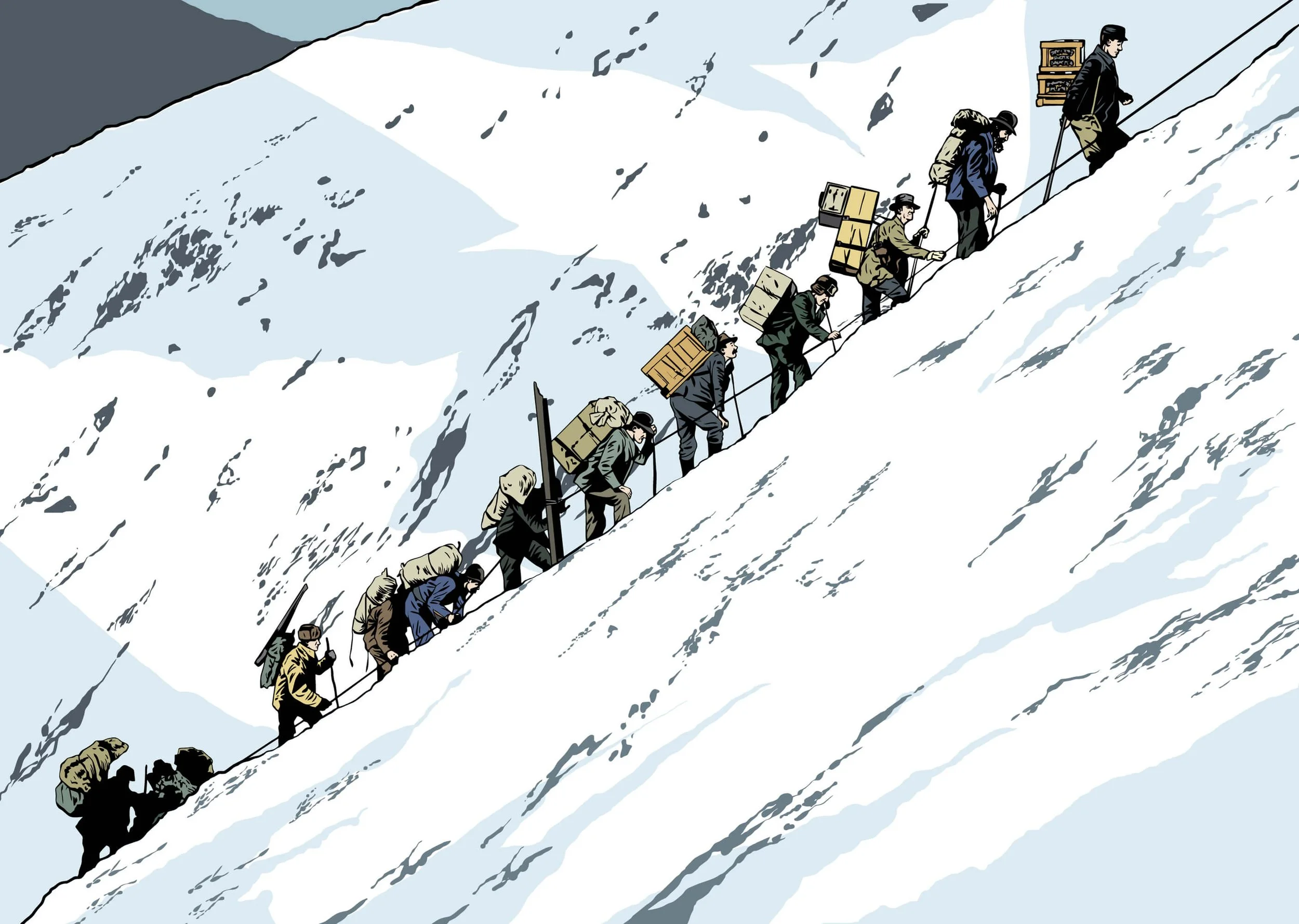GALLERY
ILLUSTRATIONS

Stampeders climbing up Chilkoot Pass.

Miners working underground. One is collecting a wheelbarrow full of gravel, which will be sorted through for gold.

Front Street, Dawson City. Most of the businesses were located here, and it was always crowded with people.

A hardware store in Vancouver, BC, selling supplies like shovels, snowshoes, saws, and axes to stampeders before they left for the Klondike.

Two men panning for gold in the Yukon River.

Panoramic view of Dawson City, Yukon. The Yukon River is in the front, and the Klondike River can be seen in the background.

Mining operations along a creek in the Klondike Gold Fields during the winter.

Stampeders sailing their homemade boats, filled with supplies, from Lake Bennett up to Dawson City.

"Tent city" of stampeders along the shores of Lake Bennett, waiting to set sail for Dawson City in the spring.

Steamship docked along the wharf at Dawson City. It carried stampeders up to Yukon from southern parts of Canada.

Stampeders travelling through a canyon on the Chilkoot Trail near Dyea, Alaska.

Stampeders in their winter gear.

A miner using a dog sled to carry his supplies in the winter.

A sluice box on Bonanza Creek. Dirt is scooped into the box and then carried through it by water from the creek. As the dirt passes through the box, heavy materials like gold fall to the bottom.

Steamships filled with stampeders arriving in Dawson City.

Miner standing at the bottom of a sluice box. The dirt and water that pours out of a sluice box after the heavier materials have been sorted from it are called "tailings."

First Nations "packers," who were paid to carry (or "pack") miners' supplies along the Chilkoot Trail.

First Nations packers hauling a sled full of supplies across a makeshift wooden bridge.

From left to right: George P. MacKenzie (a teacher and politician), Chief Jim Boss of the Ta’an Kwäch’än people, Skookum Jim (a co-discoverer of the gold at Bonanza Creek), and Reverend W.G. Blackwell.
